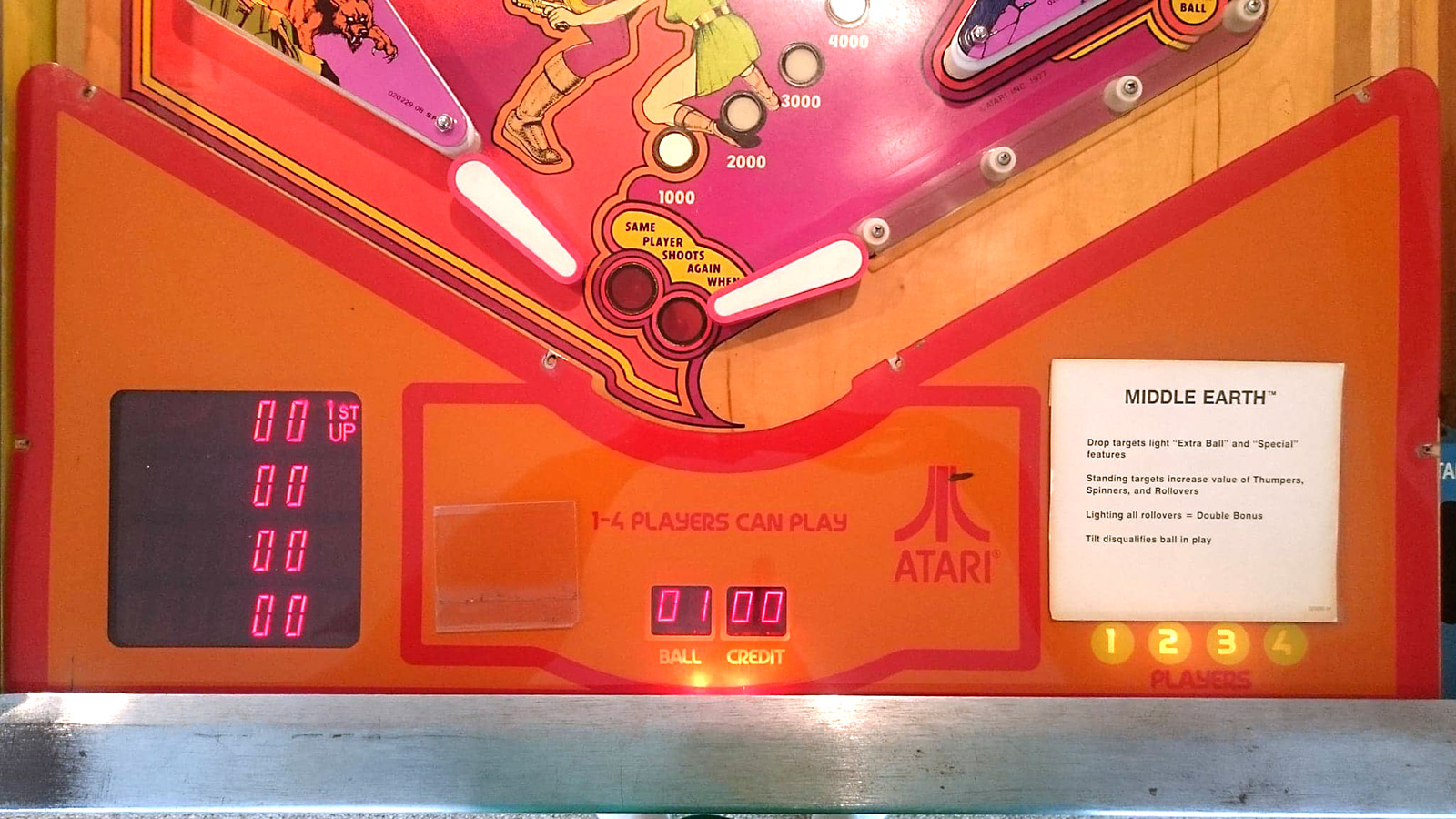Atari
When I first entered the pinball room at the strong, the first machine to catch my eye was Atari’s Hercules machine. The sheer size of the machine caught my eye. So when Jeremy told us that Atari machines were prone to catch fire, I was incredibly curious.

Atari entered the pinball industry in 1975. They had been regarded as very influential in the video game industry at this point, but video games were still much less profitable than analog games. Atari intended to highball traditional pricing for machines by being more technologically advanced than their competition. However, their innovation often came with problems.
The biggest problem with Atari’s pinball efforts was there inexperience in the field. Infamously, Atari placed their circuit boards below the play field in their first generation of pinball machines. This often led to screws and misc pieces falling off and catching fire on the circuit board. This made these games far less popular with vendors. Atari was also very inexperienced in manufacturing. They often faced issues with their machines. Former Atari vice president Don Osborne said it took Atari four months to do what Bally could in two weeks. This combined with the company’s insistence on being innovative and changing the industry led to a crop of technical issues.
First generation Atari pinball machines also displayed the score of games on the apron (the corner of the play field). This was a huge mistake because, as Steve Ritchie (Former designer at Atari) put it “A player’s score needs to be displayed and celebrated.” This made these games much less popular with players.

With the less than anticipated sales number due to the above factors, the decision was made to close the pinball decision in 1979 after producing only 7 machines. While they certainly faced their problems, many pinball enthusiasts have
Pepper’s Ghost
While watching the documentary, I was fascinated by the illusion technique used for pinball 2000. After some research I learned all about Pepper’s Ghost. The effect essentially works by using a glass to reflect someone(or something) from a hidden area to the area where the viewer/audience can see only the reflection. This leaves the reflected with a hologram like appearance.

In 1862. Henry Dircks used the technique to develop a machine called the Dircksian Phantasmagoria. When John Pepper saw this device, he knew that with modifications it could be used to display a ghost on a stage. This was done successfully in a showing of Charles Dickens’s The Haunted Man. Upon great reception, the technique was named after Pepper, despite his wish to give Dircks credit. The technique has had many modern implementations since it’s inception. It’s used with live actors by Disney Land’s Haunted Mansion and Phantom Manor attractions to give the appearance of ghosts in the attractions.

The technique was also famously used at the Coachella music festival in 2012 to have Tupac Shakur perform “live” with Dr. Dre and Snoop Dogg more than 15 years after his death. The way this implementation worked was a very high quality CG animated video of Tupac was created which was then projected onto a glass which reflected it onto the stage. Despite all the press referring to it as the “Tupac Hologram” it actually wasn’t actually a hologram at all! Although it was the most famous example, this isn’t actually the first time the technique was used for a live concert. That accolade actually goes to the Gorillaz. In 2006, the virtual band performed live at the Grammy Awards. A CGI animation of the band’s performance was created and then spliced with live-action footage of Madonna performing. This was then reflected from a projector onto the stage. This gave the illusion of Madonna actually playing live on stage with the cartoon band. The Gorillaz have gone on to use the technique on many of their live tours. It’s often done to have the animated band members appear live on stage with the actual musicians performing live versions of their songs.
Bumper Controversy
I had never really thought before as to how bumpers worked in pinball, but after Martin’s demonstration of the inner mechanisms of a pinball machine, I was fascinated. From martin, we learned that when the ball touches the bumper, it depresses a small ring which then activates a solenoid that then quickly pulls down a metal cone. The conic shape ensures that no matter how it interacts with the ball, it will push it away from the bumper (and quickly, too).
Although the debut of the bumper is often credited to Bally’s 1936 game aptly titled Bumper, the game Bolo‘s use of the bumper actually predates this by 5 months. The game was designed Raymond Kay and the bumper for that game was developed by W. Vonstoeser. This early version of the bumper was a pin that was mounted on a spring that could move the ball in any direction.

In the 80’s a New York pinball operator stated in an interview that in the 30’s, Bally president Ray Maloney had stolen the idea for the bumper from Bolo and then patented it after improving upon it. This caused the manufacturer of Bolo, Pacent Novelty Manufacturing Co. to file for bankruptcy in 1937.
However, the controversy regarding the bumper does not stop there. In 1960, pinball designer Harry Mabs claimed he invented the bumper in his game Washington made in 1934 in Miami Florida. This however has yet to be proven. Mabs has not publicly stated what company manufactured Washington. There has also been little information found online about the game. On IPDB, it’s speculated that only a few copies of the game were made to the local Miami area. Although some are hesitant to believe Mabs claims due to the lack of evidence, some do believe his claims based on his reputation. Mabs was the designer of Humpty Dumpty, and is subsequently credited with introducing the flipper to pinball. Personally, I think I believe that Raymond Kay and W. Vonstoeser are the true creators of the bumper, but I don’t think I can say that with certainty

Love watching Crime movies 1
Nice article, thank you!